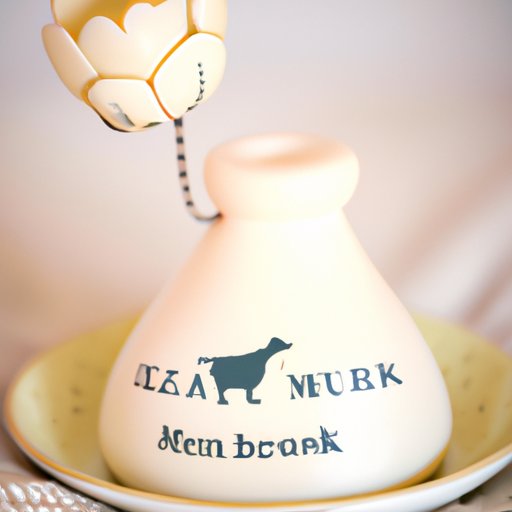How to Increase Breast Milk Production Naturally
As a new mom, you may have concerns about your breast milk production. Low milk supply can lead to various problems, including the baby’s insufficient weight gain and a higher risk of infection. Fortunately, there are multiple ways of increasing breast milk production naturally. By following a few tips and strategies, you may see an improvement in your milk volume and quality.
Encouraging Frequent Breastfeeding
One of the most effective ways of boosting your milk supply is to breastfeed your baby frequently. The more your baby feeds, the more your body produces milk to meet the demand. Aim for breastfeeding at least every two to three hours during the day and once or twice during the night. If your baby is not hungry or falls asleep during the feeding, try to wake them up and encourage them to eat more.
In addition to regular breastfeeding, you can also try pumping your breasts after or between feedings to empty them completely. This signals your body to make more milk and helps maintain your milk supply. You may feel more comfortable using a breast pump when your baby is not hungry or when you have too much milk.
To encourage frequent breastfeeding, you can:
- Offer both breasts at each feeding
- Use breast compression to increase milk flow
- Skin-to-skin contact with your baby as often as possible
- Minimize the use of pacifiers and bottles, if possible
- Find a comfortable nursing position that works for you
Maintaining a Healthy Diet
The quality and quantity of your breast milk depend largely on your diet. To produce more milk, you need to consume enough calories, protein, and other essential nutrients. Make sure to eat a varied, nutrient-dense diet that includes:
- Lean proteins like chicken, fish, and beans
- Healthy fats, like avocado, nuts, and seeds
- Whole grains, like oatmeal and brown rice
- Fresh fruits and vegetables
- Iron-rich foods, like dark leafy greens and red meat
- Calcium sources, like milk, cheese, and yogurt
You can also try incorporating lactogenic foods that are known to promote milk production. These include:
- Oats and oatmeal
- Fennel seeds and fenugreek
- Brewer’s yeast
- Ginger
- Garlic
- Alfalfa
It’s also crucial to stay hydrated by drinking enough water, herbal tea, or other non-caffeinated beverages. Try to drink at least 8 cups of fluids per day or more if you’re sweating or exercising.
Practicing Breast Compression
Breast compression is a technique that can help stimulate milk flow, improve milk extraction, and increase milk supply. It involves applying gentle pressure to the breast while your baby is feeding or pumping. This technique can help your baby obtain more milk, particularly if they have difficulty latching or sucking effectively.
To practice breast compression, follow these simple steps:
- Hold your breast with your thumb and fingers in a “C” shape, with your nipple pointing towards your baby’s mouth.
- Press your breast towards your chest gently. You should feel your breast compressing slightly.
- Hold the compression while your baby continues to feed or pump for about 10-20 seconds.
- Release the compression and allow the breast to refill and produce more milk.
Make sure not to apply too much pressure or keep the compression for too long, as this can cause discomfort. You can also try switching sides or alternating between breast compressions and normal breastfeeding.
Getting Enough Rest
Your body uses a lot of energy to produce milk, so it’s essential to get enough rest for optimal milk production. Lack of sleep or stress can affect your hormones and potentially decrease your milk supply. Try to get enough sleep by napping when your baby is sleeping or asking for help with baby care if you’re feeling overwhelmed.
You can also practice relaxation techniques like deep breathing, meditation, or yoga to reduce stress and promote restful sleep. Engaging in self-care activities like taking a bath, going for a walk, or reading a book can also help you recharge, both physically and mentally.
Considering Herbal Supplements
Herbs have been used for centuries to increase breast milk supply and support lactation. Some of the most popular herbs for boosting milk production include:
- Fenugreek
- Blessed thistle
- Milk thistle
- Stinging nettle
- Goat’s rue
Before taking any herbal supplements, it’s important to consult your healthcare provider or a lactation specialist. Some herbs can cause side effects or interact with medications, and their safety during breastfeeding has not been thoroughly studied.
Seeking Professional Support
If you’re struggling with low milk supply despite trying various techniques, don’t hesitate to seek professional help. Lactation specialists, breastfeeding counselors, or your healthcare provider can provide guidance and support in addressing your concerns. They can also recommend additional strategies, such as:
- Using a breast pump or nipple shield
- Skin-to-skin contact or Kangaroo care
- Taking prescription medication to stimulate milk production
- Donating breast milk or using donor milk
Remember that every mom and baby pair is unique, and it may take time to find the right combination of techniques that work for you. Don’t be too hard on yourself and trust your body’s ability to produce milk for your baby.
Conclusion
Producing enough breast milk is crucial for your baby’s health and development. By following the tips and strategies outlined in this article, you can increase your milk supply naturally and enjoy a more positive breastfeeding experience. Remember to breastfeed frequently, eat a healthy diet, practice breast compression, get enough rest, and seek professional help if needed. With patience, persistence, and support, you can achieve your breastfeeding goals and nourish your baby with the best possible food.
